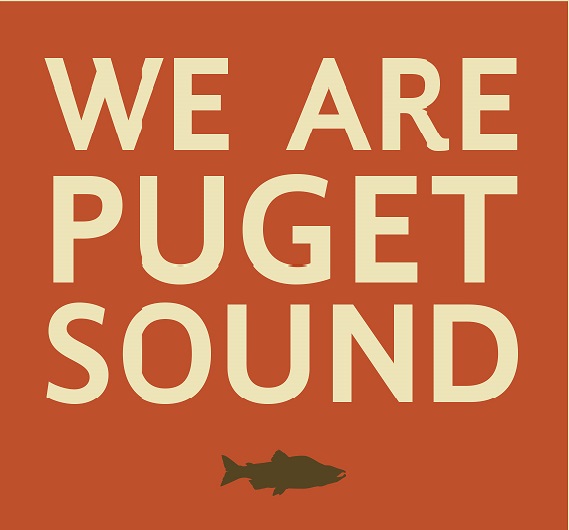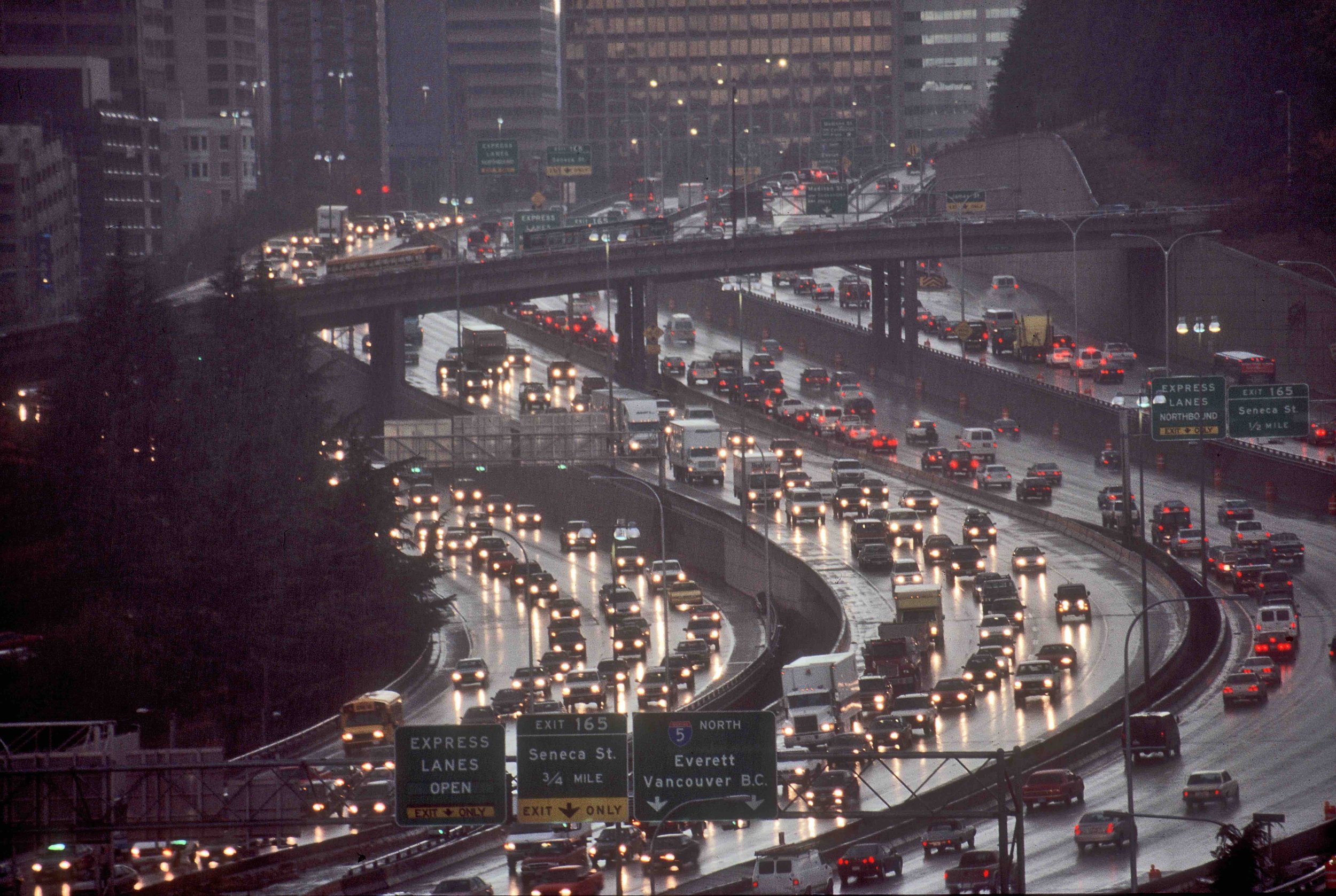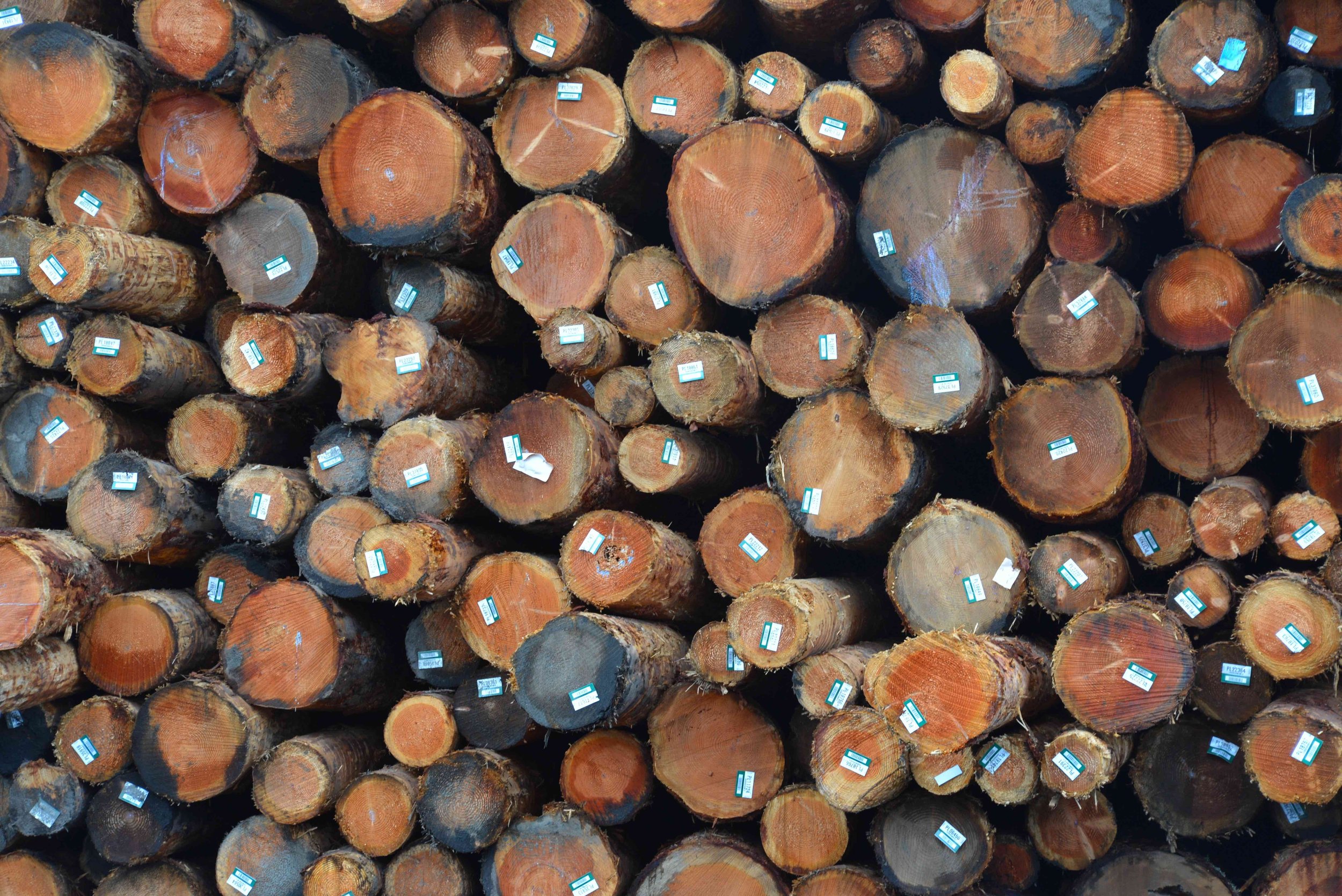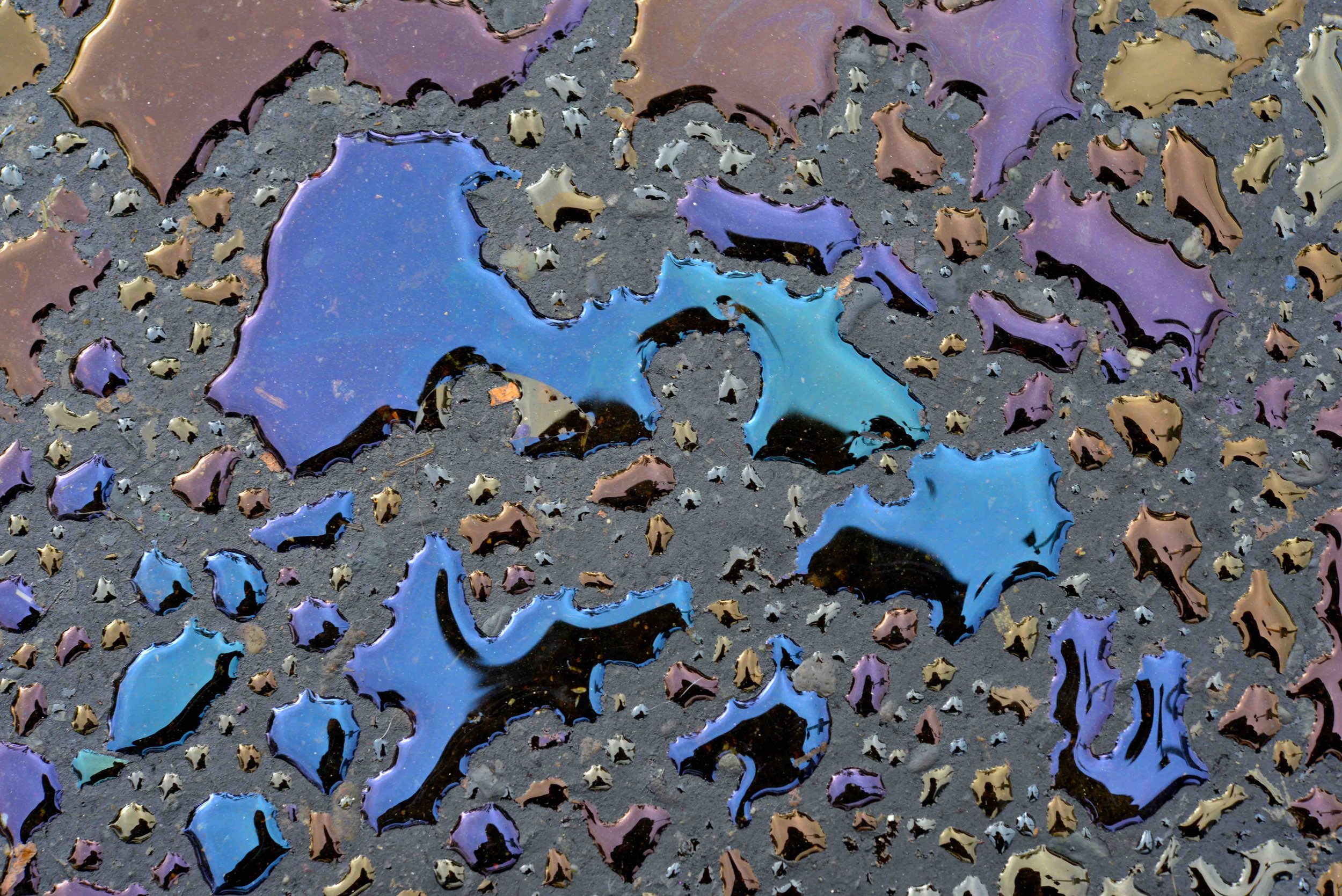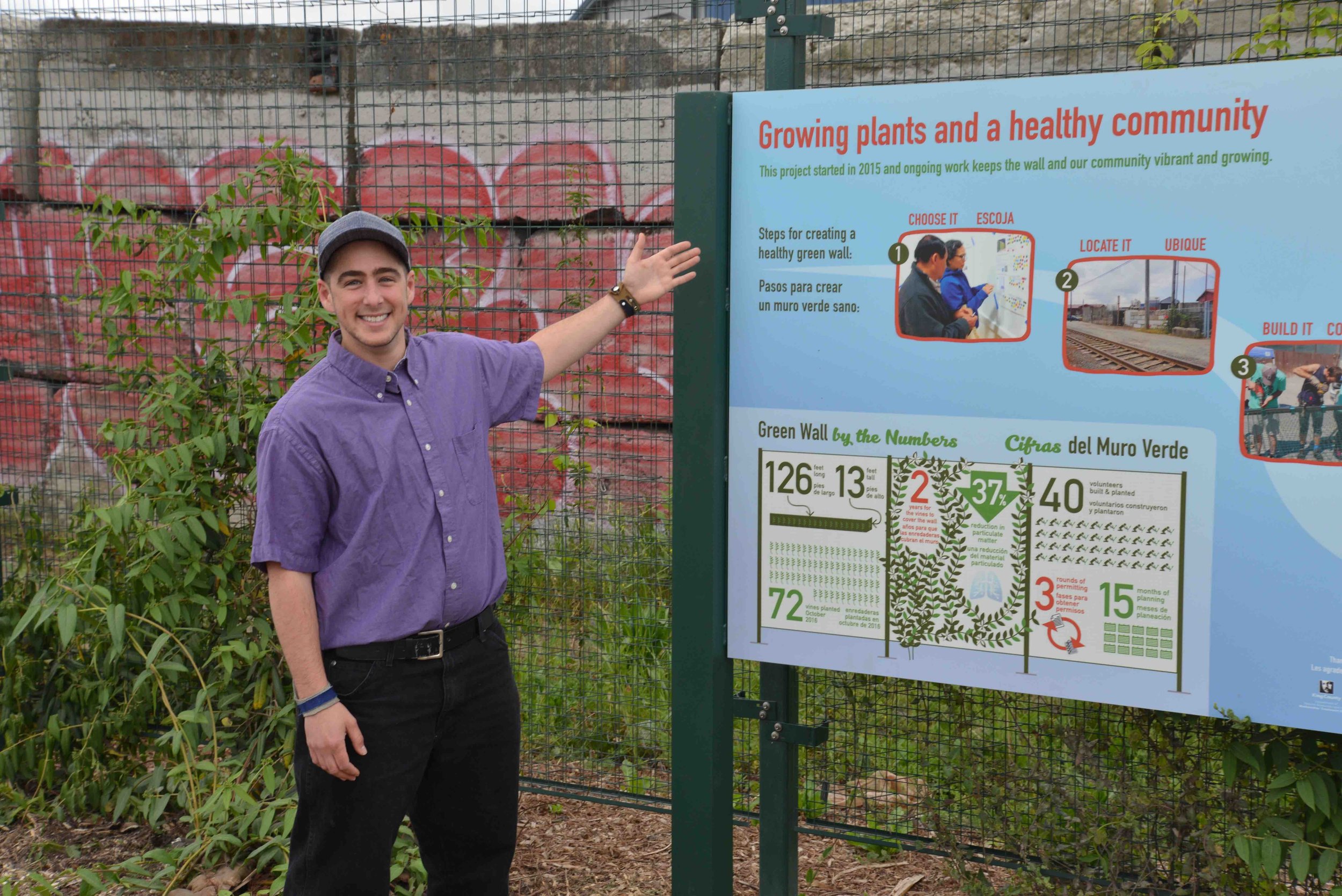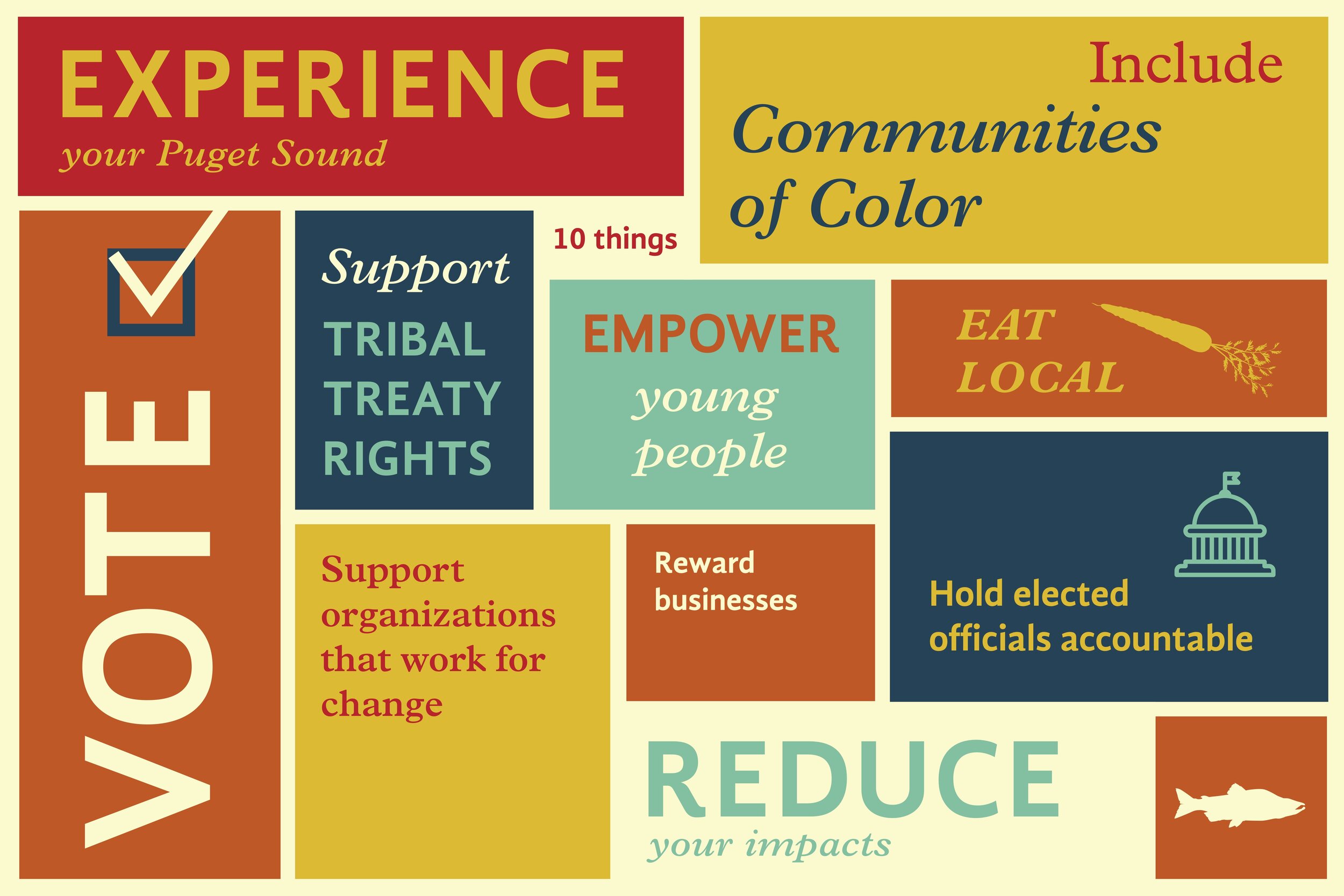Puget Sound is a magnificent and intricate estuary. Rivers rush from the Cascade and Olympic mountains and Canada’s coastal ranges through varied watersheds to feed the Sound, supporting an astonishing array of interdependent life on land and sea.
The Sound connects a vast range of people too. Forming the southern portion of a rich, international ecosystem known as the Salish Sea, the region is shared by two countries, as well as more than fifty Native American Tribes and First Nations.
We Are Puget Sound is a pledge from Braided River, Washington Environmental Council, and a host of partners around the Pacific Northwest to celebrate, sustain, and protect Puget Sound. Join us and learn more at WeArePugetSound.org. This traveling exhibit is made possible by the James Lea Foundation.
Puget Sound & The Tribes of the Salish Sea
The waters of Puget Sound are fed by an intricate web of thousands of rivers and streams, originating deep in the surrounding mountains and forests. With 2,500 miles of coastline, the Puget Sound is bordered by the Strait of Georgia to the north and the Strait of Juan de Fuca to the northwest. It forms the southern portion of the broader Salish Sea ecosystem, home to a Canadian province, a US state, and fifty-plus Native American Tribes and First Nations.
For thousands of years, indigenous peoples have lived throughout the greater Salish Sea region. Coast Salish tribes developed a rich culture and had established hundreds of seasonal camps and permanent villages before Europeans arrived in tall ships in the late 1700s and profoundly disrupted and changed their lives.
Today we recognize that the Salish Sea region constitutes the traditional and present-day homelands of many Indigenous Peoples and Tribal Nations. We acknowledge the vast, collective knowledge of these peoples and are grateful for their ancestral and current stewardship of these lands.
PHOTO GALLERY
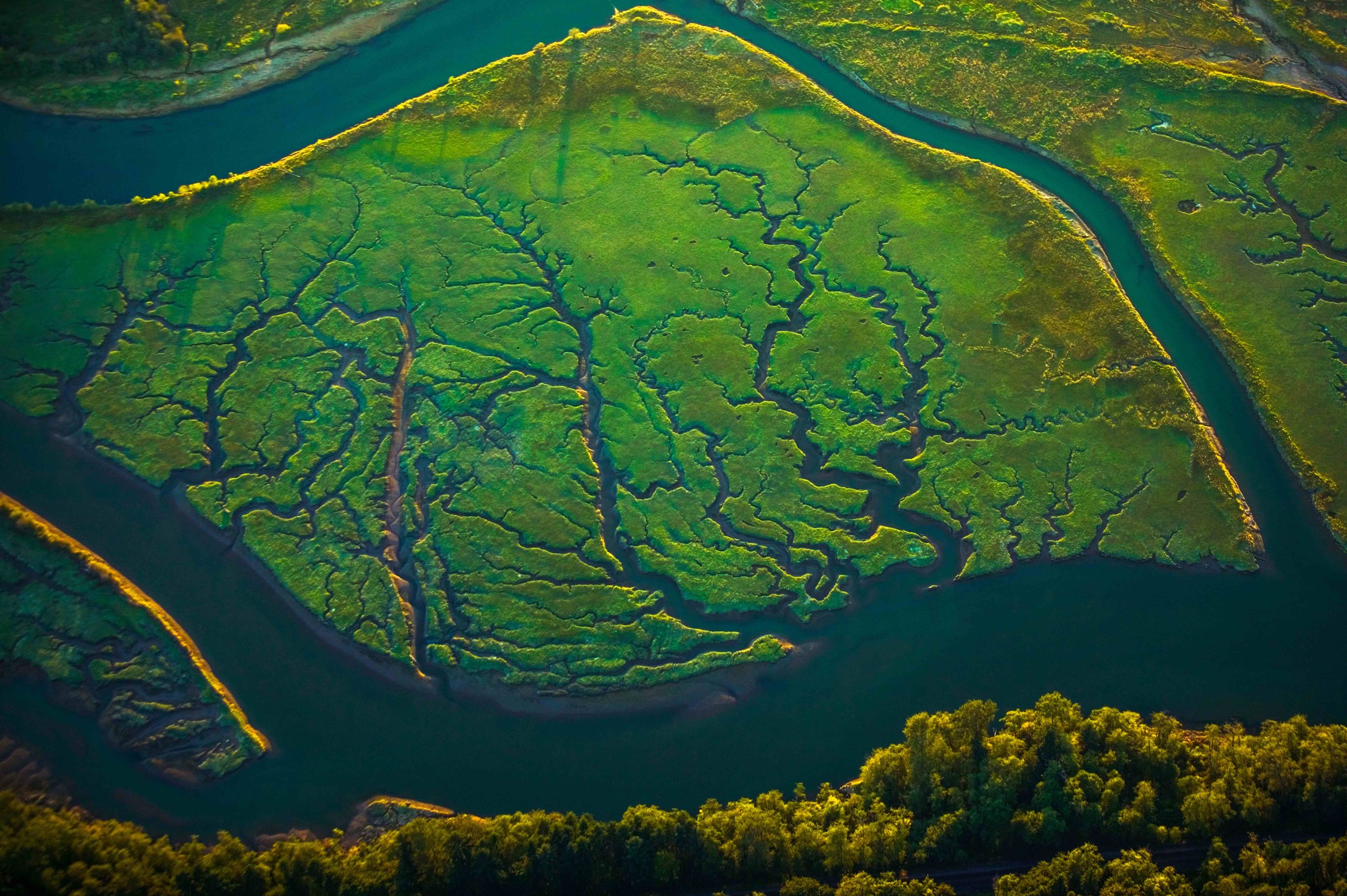
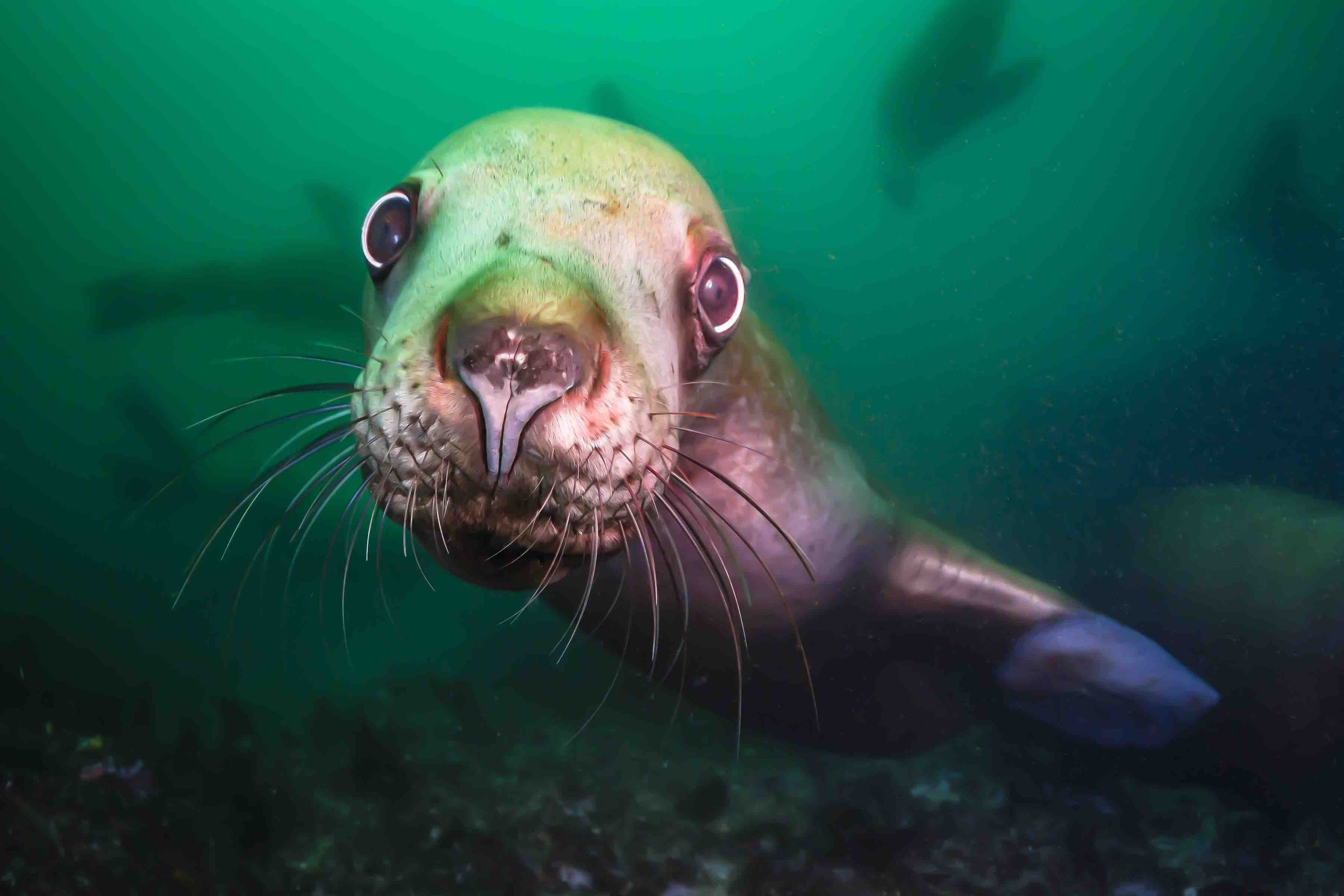

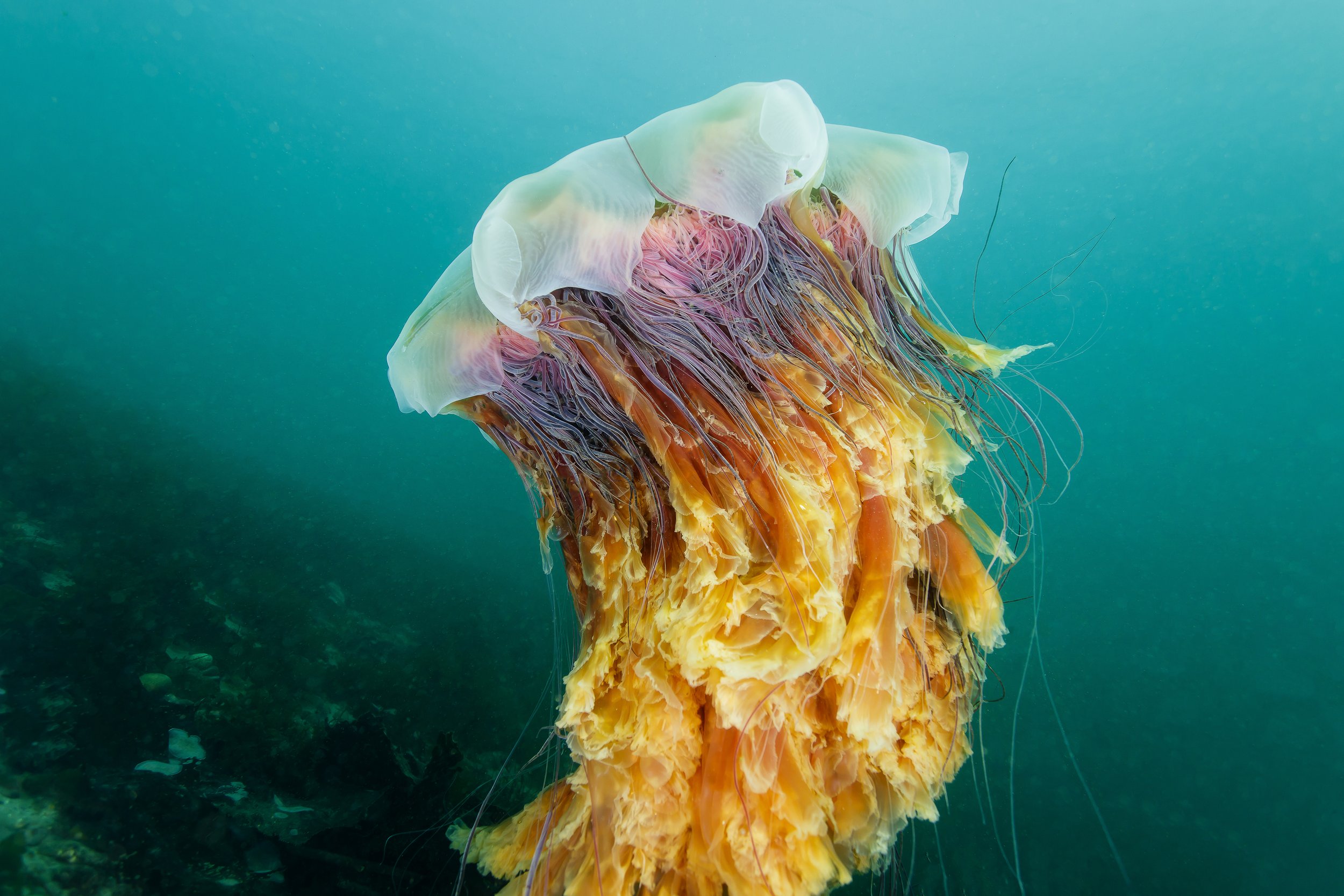
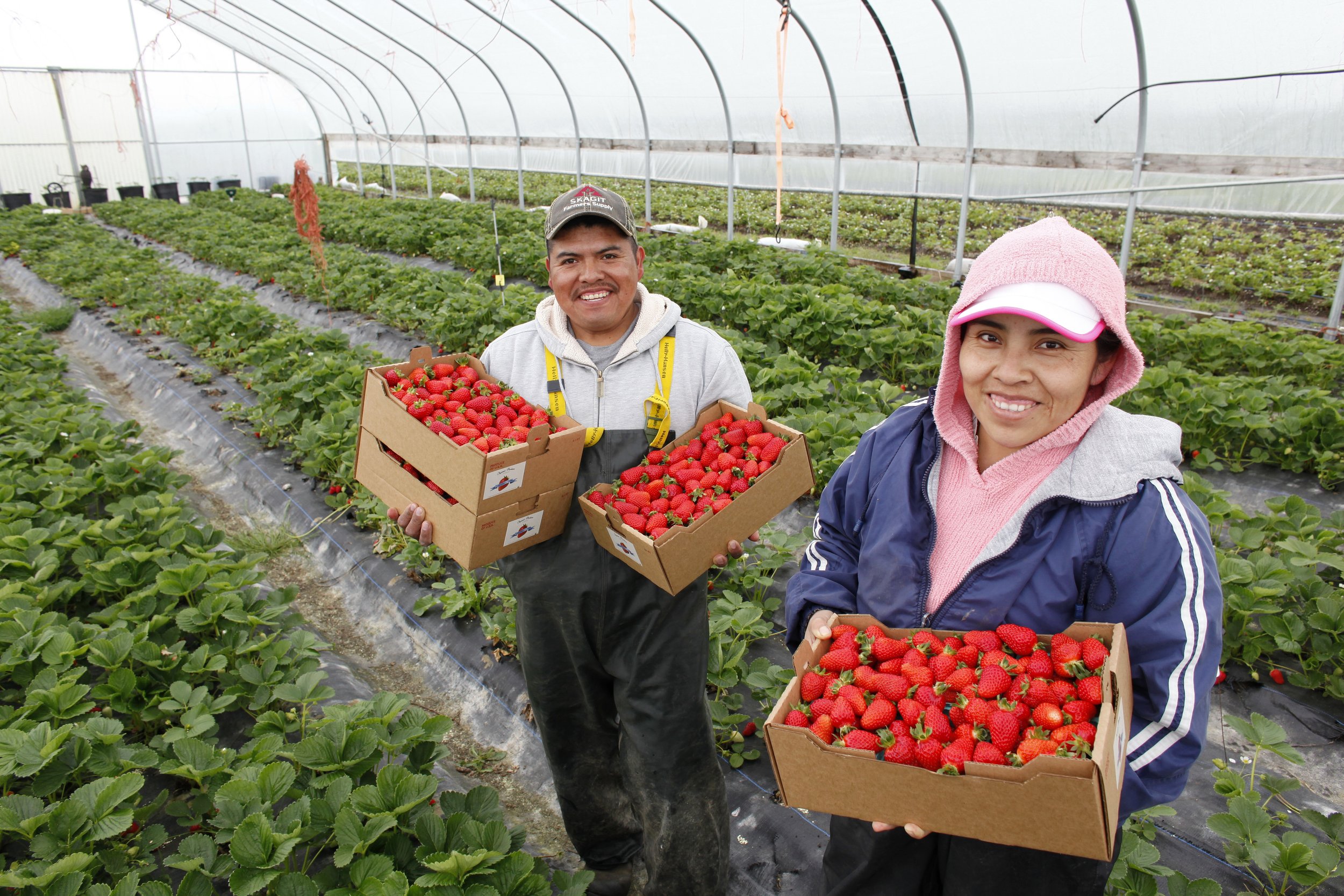
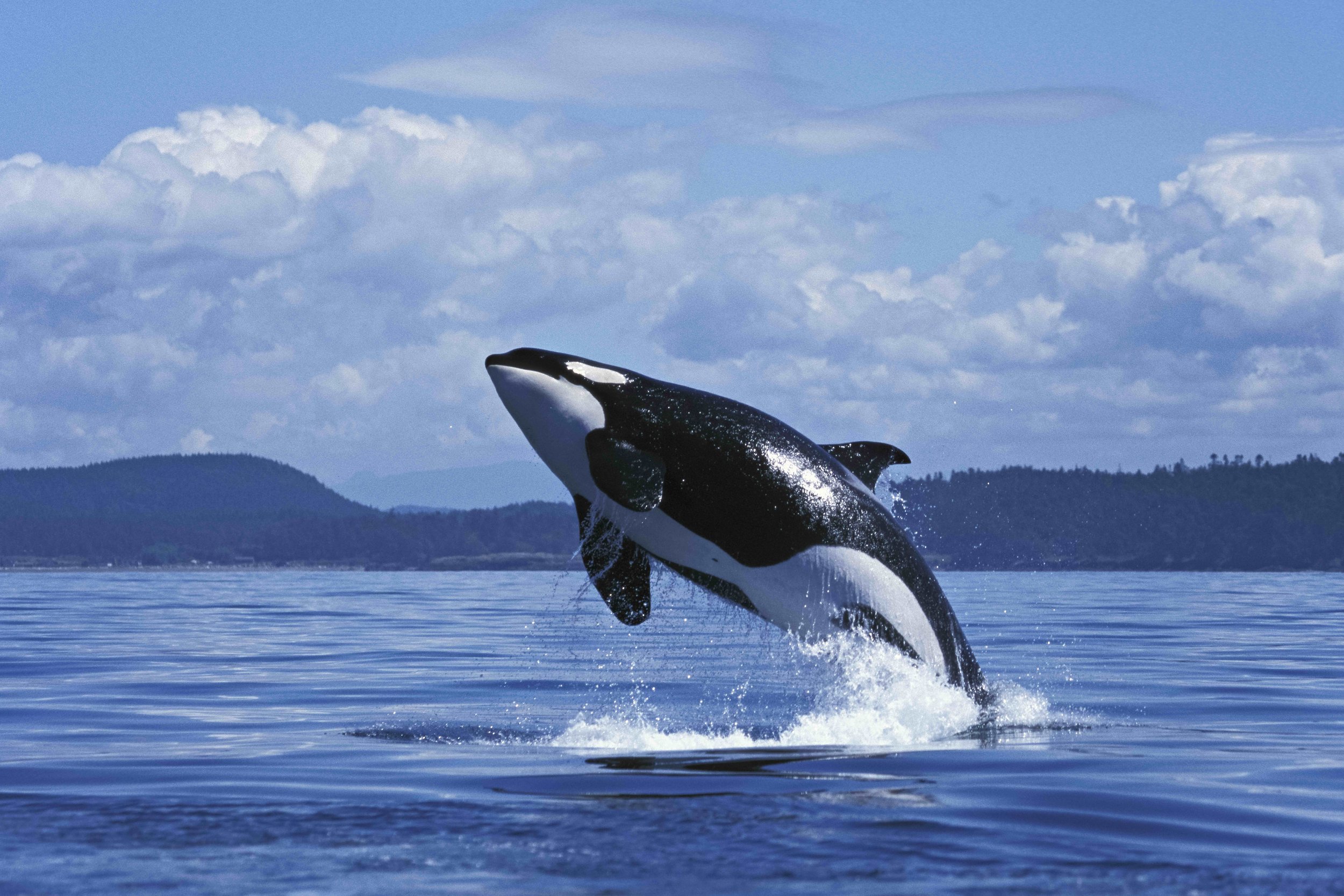
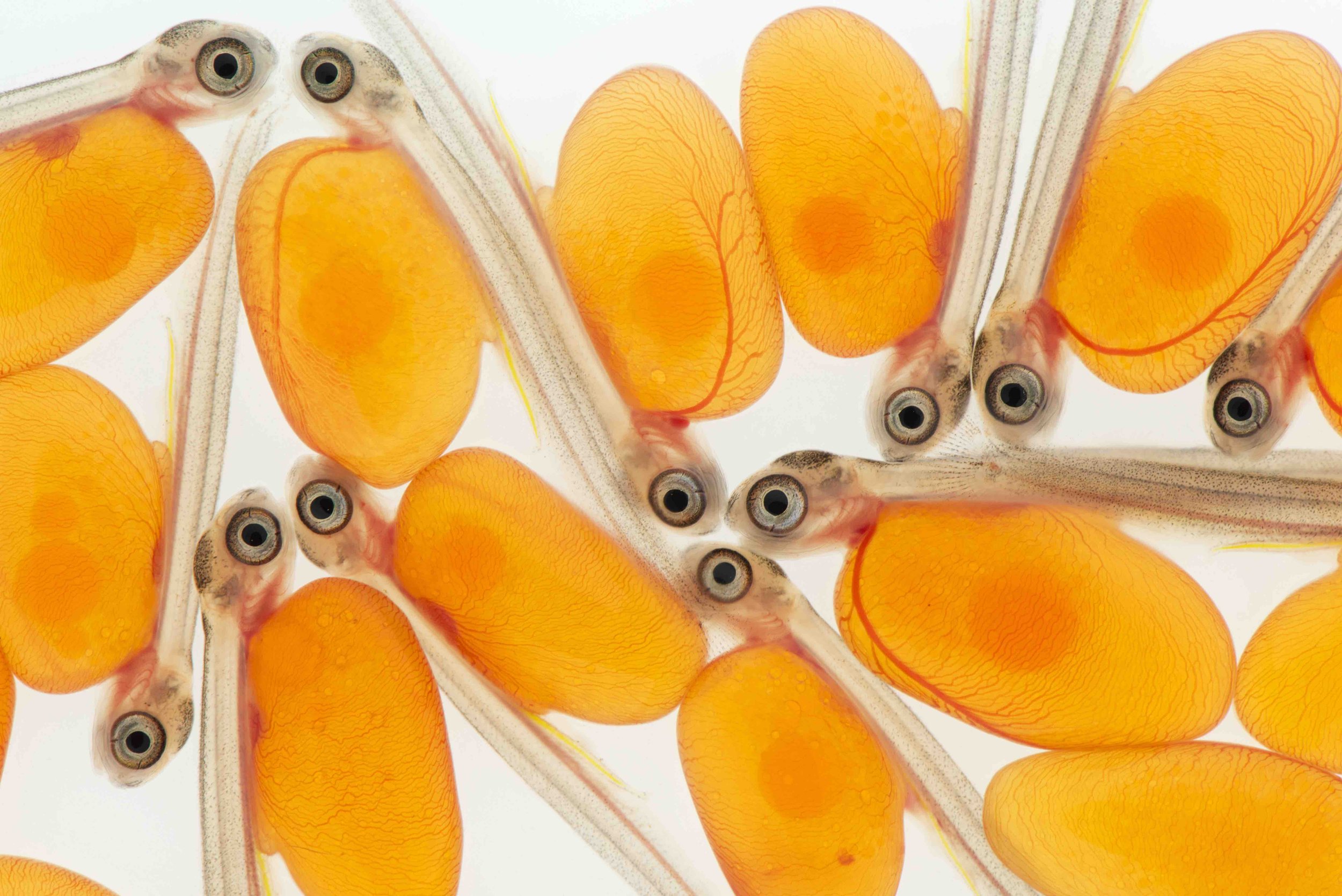
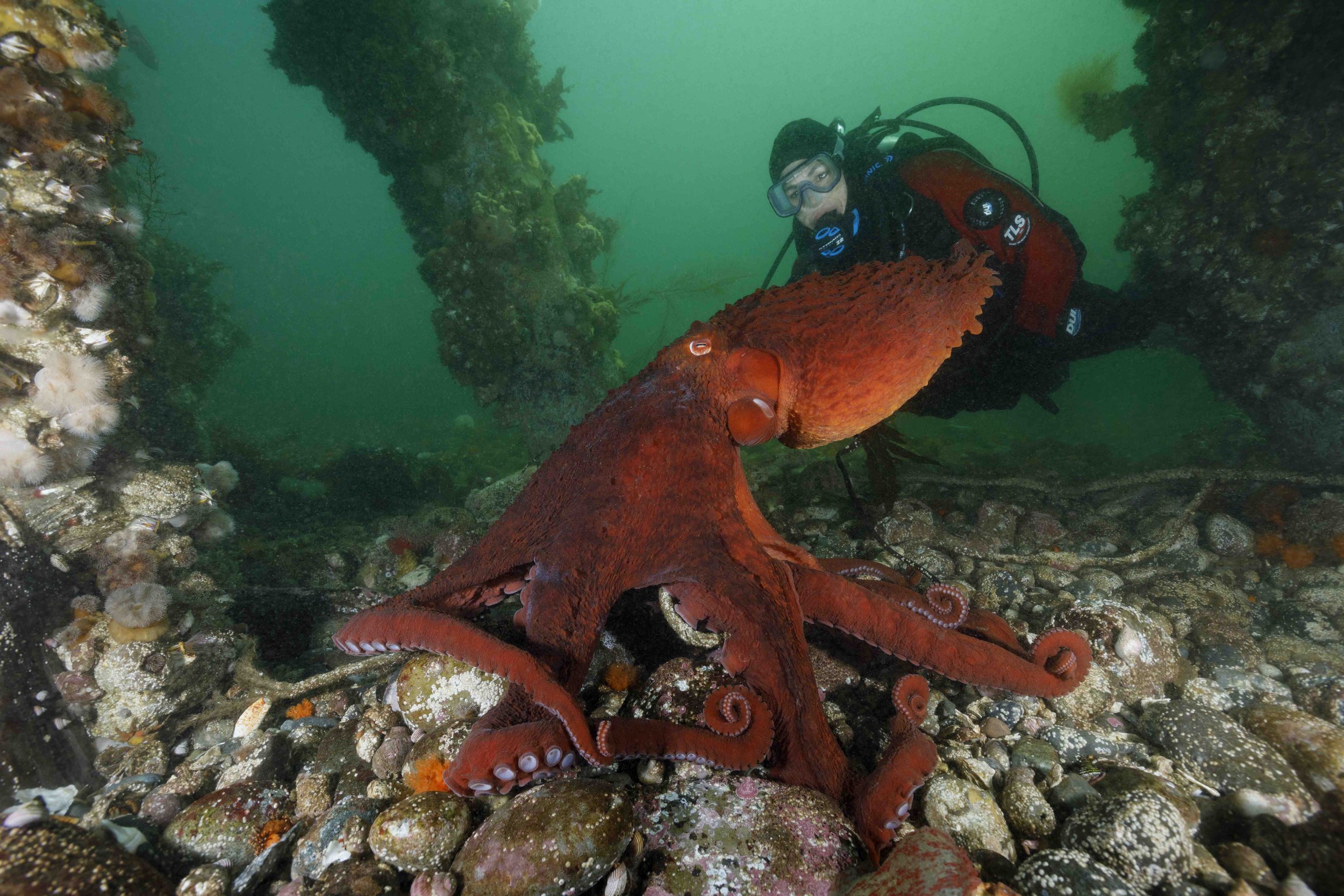
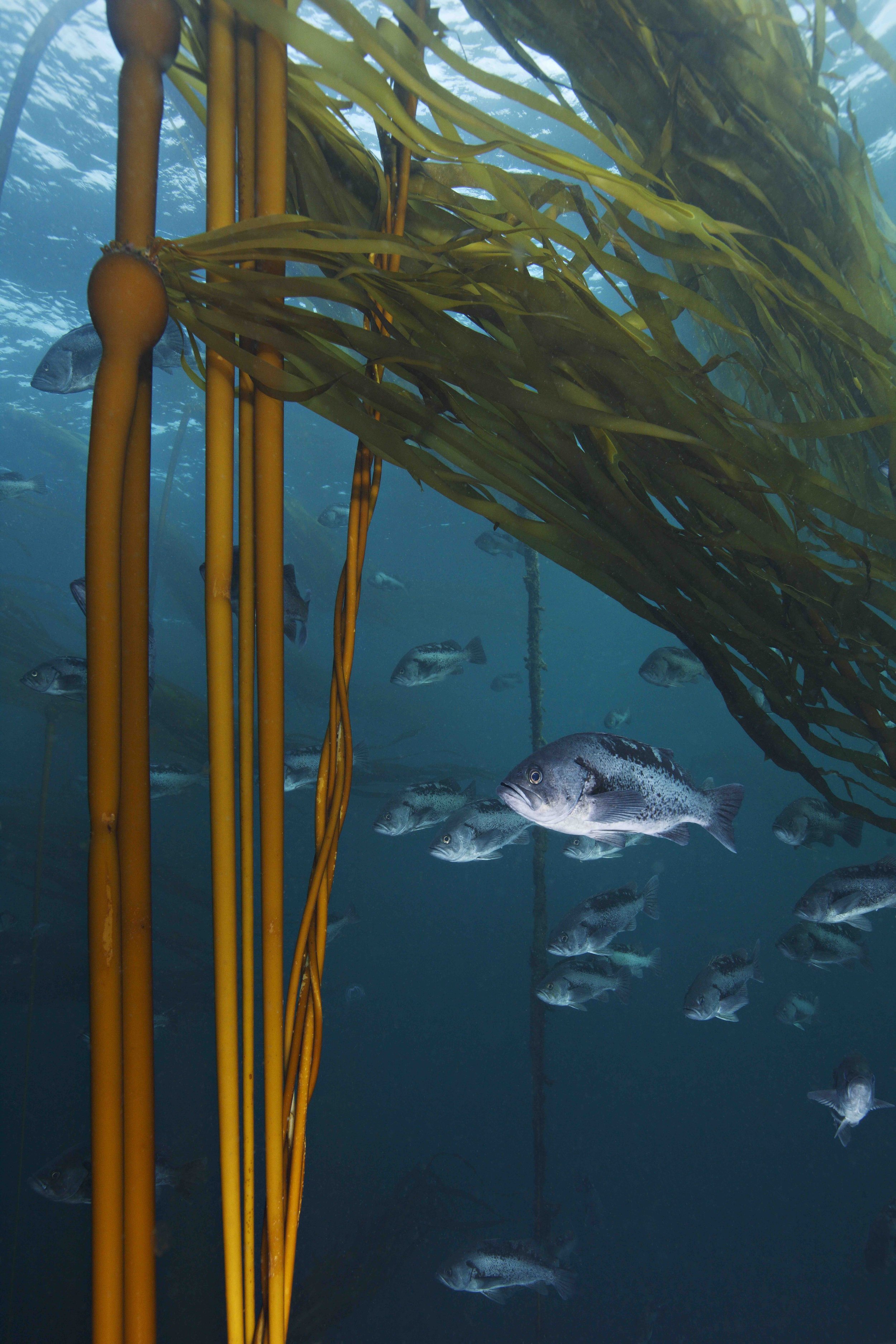
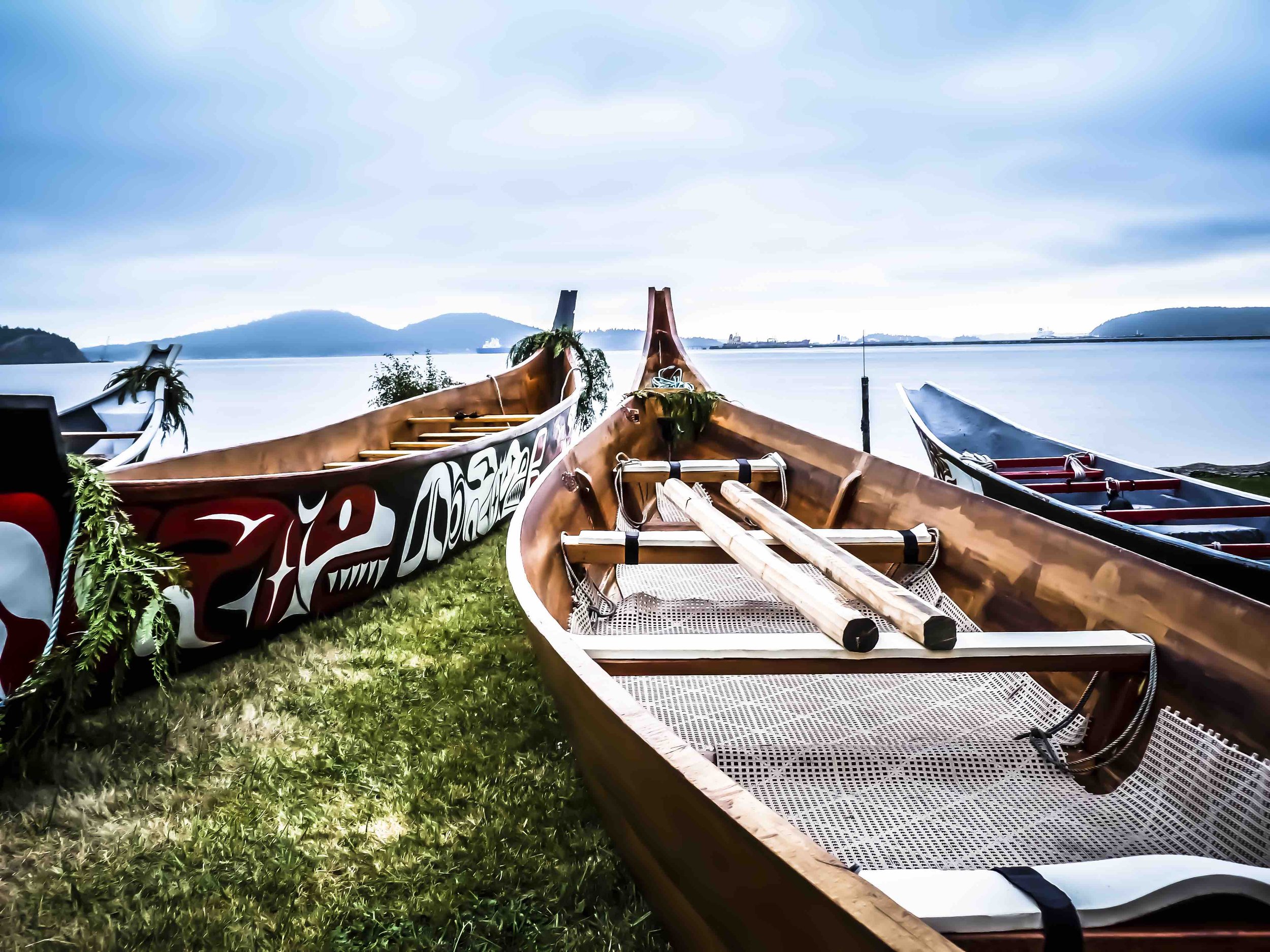
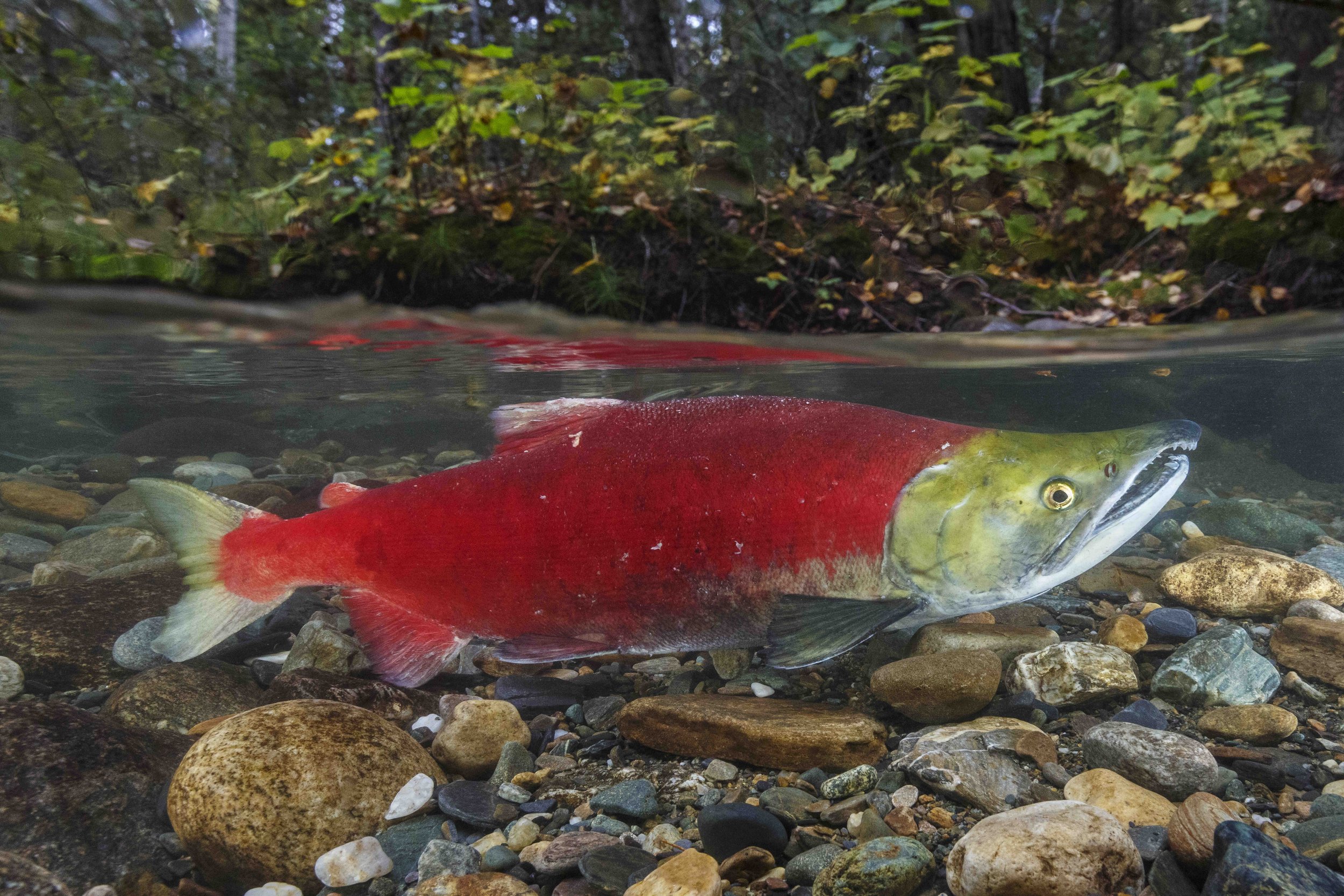
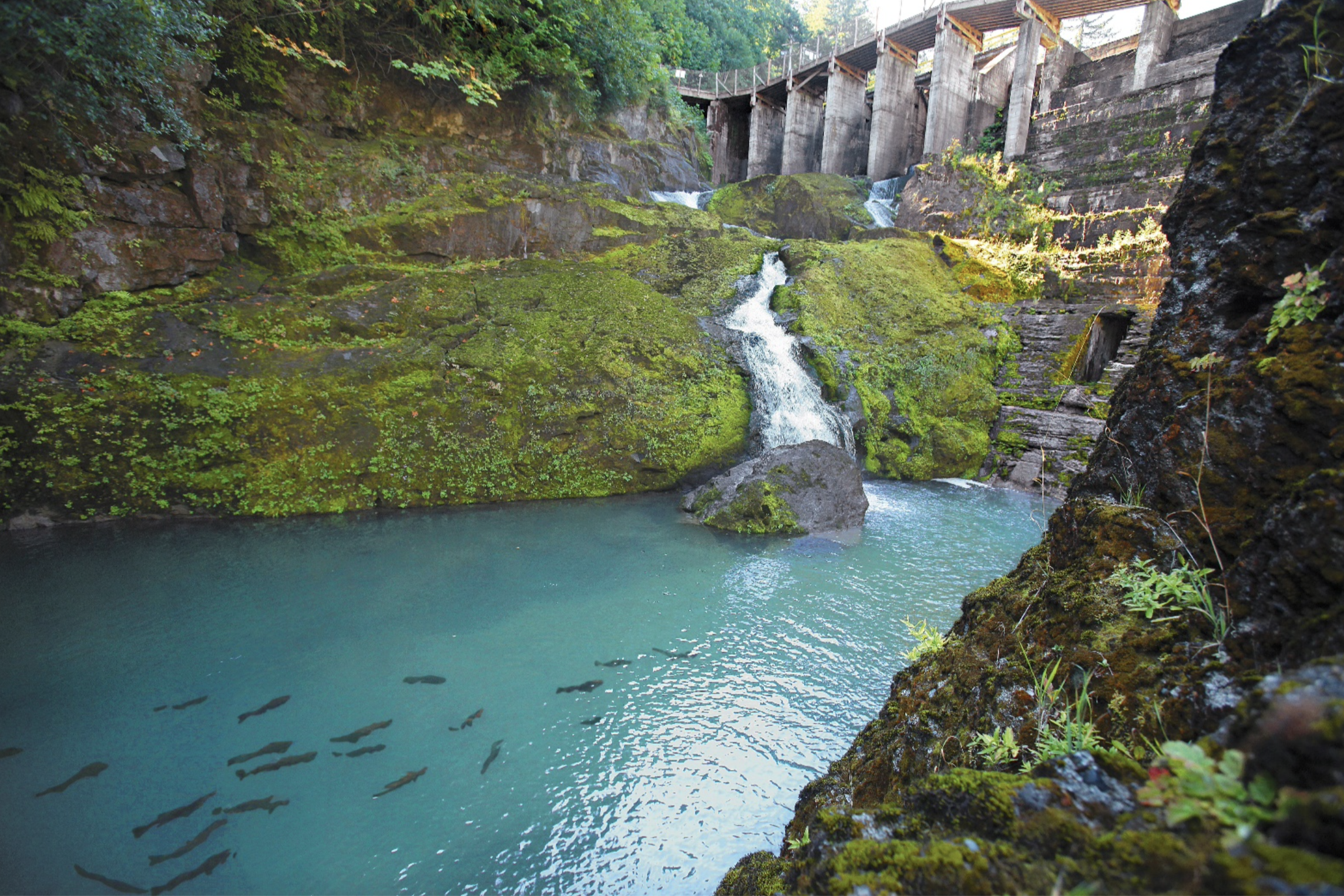


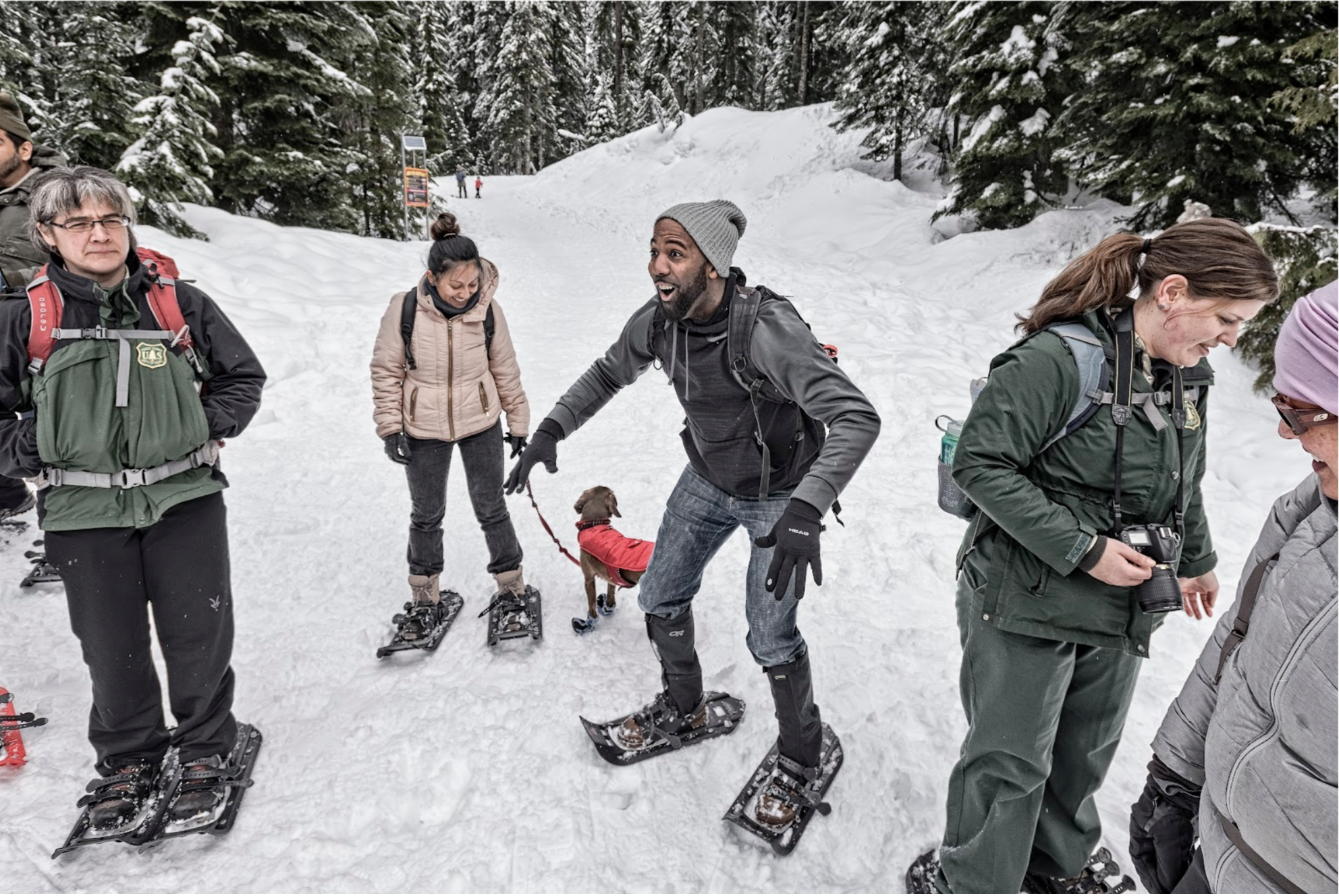
Our Growing Impact
Resource extraction and a quickly growing population in the Puget Sound region negatively affect the health of the Sound and that of the people and salmon who depend on clean water. Logging can have serious environmental effects, such as reducing habitat for birds and eliminating tree cover over streams that keeps water cool for salmon. And with increasing density and the Pacific Northwest’s notoriously rainy environment, stormwater runoff is the largest source of toxic pollution. To clean up our waterways and help salmon survive, we need a new approach that relies on green infrastructure and innovative techniques to reduce pollution, improve drainage, and filter toxic runoff from roads and rooftops. (Top two photos by Brian Walsh; bottom photo by Joel Rogers)
Cleaner, Healthier, Stronger Together
We all have a role to play in restoring healthy salmon and orca populations and building resiliency in Puget Sound. From planting rain gardens to filter rainwater and reduce the pollution entering the Sound to committing not to dump pollutants in drains that lead to the Salish Sea, individuals and businesses are making a difference. And by writing, calling, and showing up at the Capitol in Olympia, thousands of people make their voices heard, reminding their representatives how important these waters and wildlife are to all of us. (Top two photos by Brian Walsh; bottom photo courtesy of Washington Environmental Council)
#WeArePugetSound
Everyone can be a Puget Sound Protector! Here are three individuals who show their love for the Salish Sea through their actions to protect it for future generations.
Tahmina Martelly (left), organizes resiliency programs for World Relief Seattle that depave unused parking lots, turning them into urban gardens for asylees, immigrants, and refugees in Seattle—diverting thousands of gallons of polluted stormwater runoff in the process.
Sally Brownfield (center) is one of the People of the Water, the Squaxin Island Tribe that has lived on and with the water for thousands of years. Daughter, mother, educator, food gatherer, weaver, salmon fisher, oyster shucker, archaeological digger—her story is rich with experiences.
Kyle Petersen (right) lives on a small farm near Sultan, Washington—forty miles from the nearest saltwater beach. As a trained volunteer for the Beach Watchers, Kyle is doing his part to protect Puget Sound from habitat destruction and damage to sea creatures.
(Photos by Brian Walsh)
Take Action!
Change begins with each of us, and now is the time to act individually and collectively. We challenge you to join us to help protect Puget Sound. Focus on one action each month and share your experiences with family and friends to motivate and energize them.
